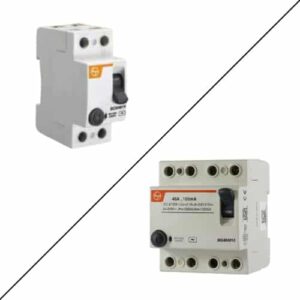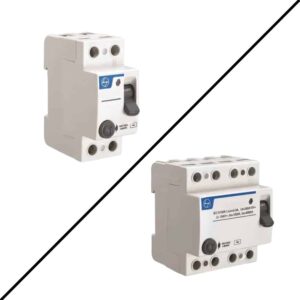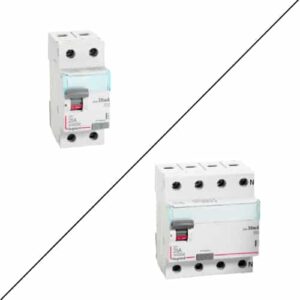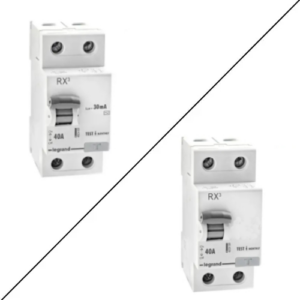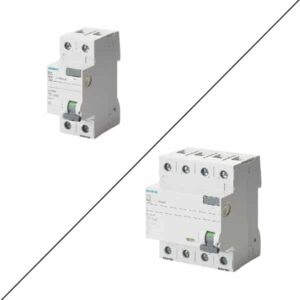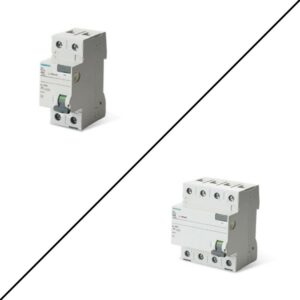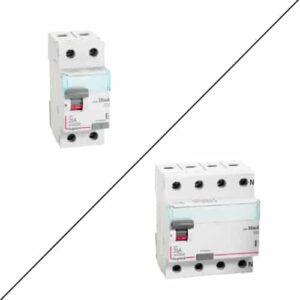Why Buy RCCB (Residual Current Circuit Breaker)?
Whenever we think about wiring and maintaining electrical safety in our homes, our thoughts end with a miniature circuit breaker (MCB). We do not realize that there are other things that we need to protect ourselves from, such as electrocution which is often caused by earth leakage/residual current.
What is RCCB
RCCB is a safety device that protects human beings from electrocution as well as from fire caused by electrical shock. It monitors the current; whenever a fault occurs in earthing, it automatically disconnects the circuit, protecting everyone. RCCB price is also very affordable for all.
Earth leakage occurs, often due to poor wiring which causes parts of a wire to be exposed. This creates a separate path for the current to flow. If a person comes in contact with the exposed area, they get electrocuted.
A ‘fault’ occurs when there is a difference between the current flowing in the live conductor and the neutral conductor. The RCCB checks this difference constantly. If the difference exceeds the rated sensitivity of the device, the RCCB trips, disconnecting the circuit.
Working Principle:-
The RCCB uses Kirchhoff’s Current Law as its working principle.
Kirchhoff’s Current Law states that for a parallel path the total current entering a circuit’s junction is exactly equal to the total current leaving the same junction.
For the safe functioning of the circuit, the amount of electric current flowing through the live conductor should be equal to the amount of current flowing inside the neutral conductor.
The RCCB senses this difference in the solenoid and within milliseconds the RCCB disconnects the supply of power to the circuit. This provides protection to the person.
Most RCCBs have a ‘rated sensitivity for leakage current’ of not more than 30 mA. A test button is provided with the device which on being pressed creates an imbalance in the neutral coil of the solenoid, the RCCB trips, and the supply is disconnected thereby checking RCCB’s reliability.
The above diagram shows an RCCB in an ‘open condition’, i.e., when the device has disconnected the circuit due to a ‘fault’.
Types of RCCB:-
RCCBs can be categorized under three groups-
Number of poles
Rated sensitivity
Type
Type of RCCB-
Type
Symbol
Characteristics
Loads
AC
Trips on AC only.
Suitable for general use, such as immersion heaters.
A
Same as that of type AC, in addition, trips on pulsating DC.
Suitable for domestic environments.
F
Same as type A, in addition, tripping is achieved for circuits with mixed frequency leakage circuits. They are able to provide protection against pulsating DC current.
They are most suitable for frequency-controlled equipment such as dishwashers, some air conditioners.
B
Same for type F, in addition, tripping is achieved for AC current up to 1kHz,
pulsating DC superimposed on a smooth DC.
3-phase and single-phase electronic equipment.
The above table shows the different types of RCCBs and the type of current they are sensitive to, i.e., the trip when they are able to sense this current in the circuit.
Usually, type AC RCCBs are most commonly used. The symbol shown in the table should be visible on the device which indicates the type of RCCB it is.
Number of Poles-
The no. of poles in an RCCBindicates the number of conductors interrupted when a fault occurs. There are three kinds based on
2-pole- These are used in single-phase connections and disconnect both the conductors during a fault.
3-pole- These are used in three-phase AC connections but it only has three wire connections.
4-pole- Also used in three-phase AC connections but it also has an extra connection that connects to the neutral of the power supply.
Earth Leakage Circuit Breaker (ELCB)
This device has the same function as an RCCB but it is a voltage sensor device. They are suitable for three-phase circuits and high current loads.
The residual current level and tripping delay are often adjustable, thus allowing selectivity among different circuit breakers. Regardless, ELCB is an old device and the RCCB has better advantages.
Rated Sensitivity-
RCCB sensitivity is expressed as IΔn. According to values defined by the IEC, RCCBs can be divided into:
High sensitivity: 5 – 10 – 30 mA (for direct-contact or life injury protection),
Medium sensitivity: 100 – 300 – 500 – 1000 mA (for fire protection),
Low sensitivity: 3 – 10 – 30 A (typically for protection of machine).
Advantages of RCCBs:-
It provides protection from earth faults as well as residual current.
Disconnects the circuit when rated sensitivity is exceeded within the circuit.
RCCBs have test buttons which on being pressed simulate a ‘false fault’ situation which causes the device to disconnect the circuit. This button comes in handy as it is used to see if the device is operational.
It also protects the circuit from voltage fluctuations (rise and fall in voltage levels).
Disadvantages of RCCBs:-
It cannot detect shot circuits and over-current faults. For this, it must always be paired with an MCB.
It can only protect efficiently against electric shock if the current flows from phase to ground. It does not protect against electric shock if the current flows from phase to phase through a person or from phase to neutral.
Sometimes when there is a sudden change in electrical loads, it causes a slight amount of current to be directed to the earth (this occurs mostly in old appliances). RCCBs being very sensitive, trip causing the circuit to disconnect although there was no danger of electrocution.
An MCB provides protection from both overload and short circuits.
MCBs can be switched ON and OFF manually. MCBs and RCCBs are often used together in circuits to provide over-current, short circuit, electric shock, and fire protection.
 (+91) 7439 448 917
(+91) 7439 448 917 Cash on Delivery Available
Cash on Delivery Available



 Circuit Breakers
Circuit Breakers Power Distribution
Power Distribution Modular Switchboard
Modular Switchboard Wires & Cables
Wires & Cables
















